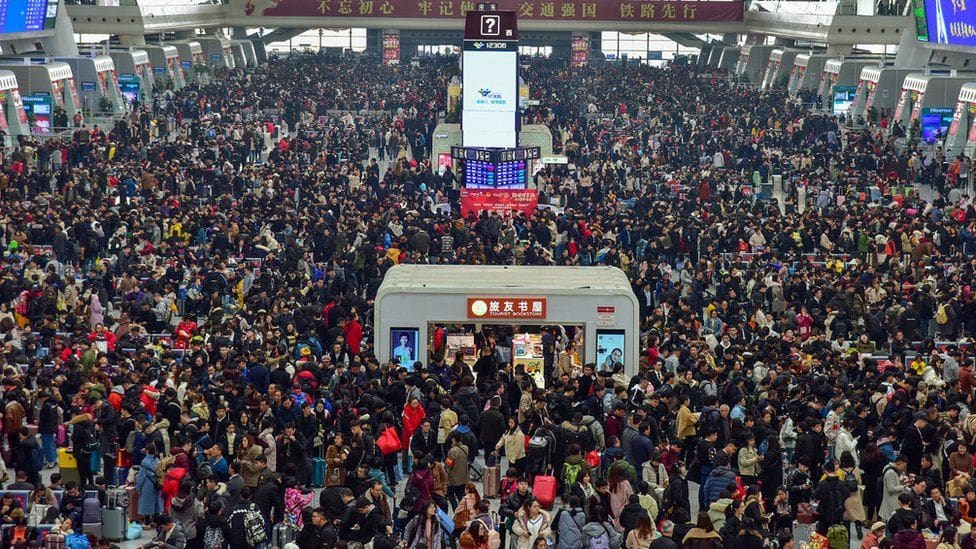Why in News?
The Lunar New Year holiday in China this year will be the first without pandemic restrictions on foreign and domestic travel since 2020.
- One of the biggest mass movements of humans globally will be witnessed over the next few days in China. This will be on account of celebrations for the Lunar New Year and the resultant traveling – termed Chunyun.
What is Chunyun?
- Chunyun is simply the period around the Chinese New Year, based on the Lunar Calendar.
- It is a period of travel in China with an extremely high traffic load around the time of the Chinese New Year.
- There is no fixed date for the New Year, with the date being arrived at based on the moon’s position.
- It begins with the first new moon of the lunar calendar and ends on the first full moon of the lunar calendar, 15 days later.
Where does the Lunar New Year come from?
- Lunar New Year marks the first new moon of the lunisolar calendars traditional to many east Asian countries including China, South Korea, and Vietnam.
- Lunar calendars consist of 12 months, each month corresponding roughly to one cycle of the moon.
- Because 12 lunar cycles do not fill a whole year an extra month is added periodically to Lunar calendars to stay close to the solar year.
- Lunar New Year is regulated by the cycles of the moon and sun.
- Other names for the Lunar New Year are Tet in Vietnam, Solnal in Korea and Losar for Tibetans.
Q1) What is Chinese Zodiac?
Chinese zodiac is represented by 12 zodiac animals. Chinese zodiac years begin/end at Chinese New Year (in January/February). Each year in the repeating zodiac cycle of 12 years is represented by a zodiac animal, each with its own reputed attributes.
Source: China’s ‘chunyun’, the largest annual migration, and what it means for the COVID-19 surge
Last updated on June, 2025
→ UPSC Notification 2025 was released on 22nd January 2025.
→ UPSC Prelims Result 2025 is out now for the CSE held on 25 May 2025.
→ UPSC Prelims Question Paper 2025 and Unofficial Prelims Answer Key 2025 are available now.
→ UPSC Calendar 2026 is released on 15th May, 2025.
→ The UPSC Vacancy 2025 were released 1129, out of which 979 were for UPSC CSE and remaining 150 are for UPSC IFoS.
→ UPSC Mains 2025 will be conducted on 22nd August 2025.
→ UPSC Prelims 2026 will be conducted on 24th May, 2026 & UPSC Mains 2026 will be conducted on 21st August 2026.
→ The UPSC Selection Process is of 3 stages-Prelims, Mains and Interview.
→ UPSC Result 2024 is released with latest UPSC Marksheet 2024. Check Now!
→ UPSC Toppers List 2024 is released now. Shakti Dubey is UPSC AIR 1 2024 Topper.
→ Also check Best IAS Coaching in Delhi
























